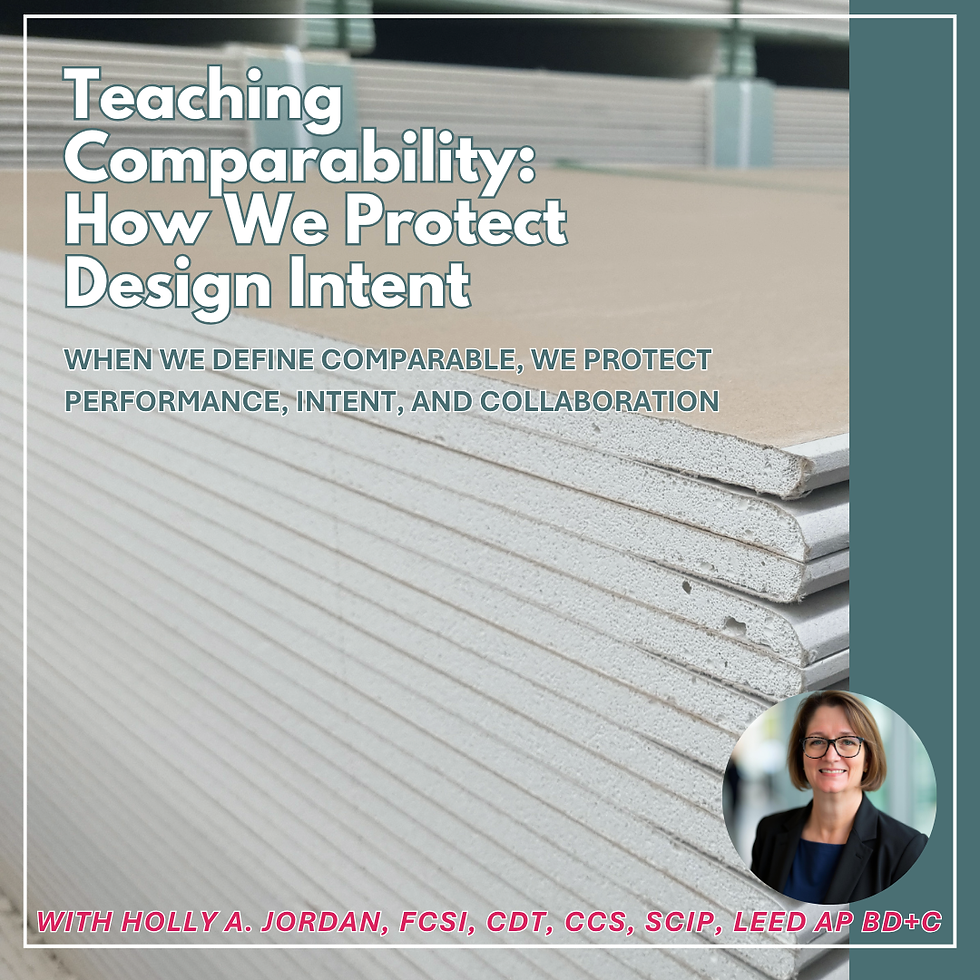The Balance Between Brevity and Substance in Specifications
- Holly A. Jordan, FCSI, CDT, CCS, SCIP, LEED AP BD+C

- Jan 17
- 2 min read
Updated: Feb 21
Lately, there’s been a noticeable push for shorter and shorter specifications, almost as if brevity alone guarantees better documents. Don’t get me wrong, I’m all for saying as much as possible in as few words as necessary. Who doesn’t love a good, succinct spec?
But here’s the thing: while keeping things brief is important, it’s equally important to make sure that what you do say covers all the bases. As the CSI CDT program so wisely emphasizes, documents need to be clear, correct, complete, and concise. And let’s pause on that word “complete” for a second because, in my opinion, it’s absolutely vital.
Why? Because shortening a document for the sake of making it shorter can be downright dangerous. You risk omitting critical details, leaving room for misinterpretation or outright confusion. . On the flip side, going too far in the other direction—adding every conceivable detail or filling pages with redundant or unnecessary information—can also cause problems. No one has time to wade through irrelevant fluff or decipher overly verbose specs. The sweet spot lies in crafting well-written, thoroughly researched, and thoughtfully coordinated documents. That’s the secret sauce.
Now, let me tell you, this is where things get interesting: the scope of a project. Determining what’s actually needed and tailoring the documentation accordingly is fundamental. There’s a school of thought out there that insists only long-form specifications are appropriate for projects. But let’s be honest, wouldn’t it make more sense to look at the specific type of project and create documents that suit its needs? A small interior renovation doesn’t require the same level of detail as a massive, ground-up hospital build, and trying to impose a one-size-fits-all approach just doesn’t work, not in today’s fast-paced, digitally-driven world.
Instead, we should focus on crafting documents that are applicable, accurate, and, here’s the kicker, likely to actually be read. Because what good is a spec, short or long, if it doesn’t serve its purpose? The goal is to create specifications that balance brevity with substance, clarity with depth, and consistency with flexibility. That’s how we facilitate project success and avoid the pitfalls of both under- and over-communicating.


Comments